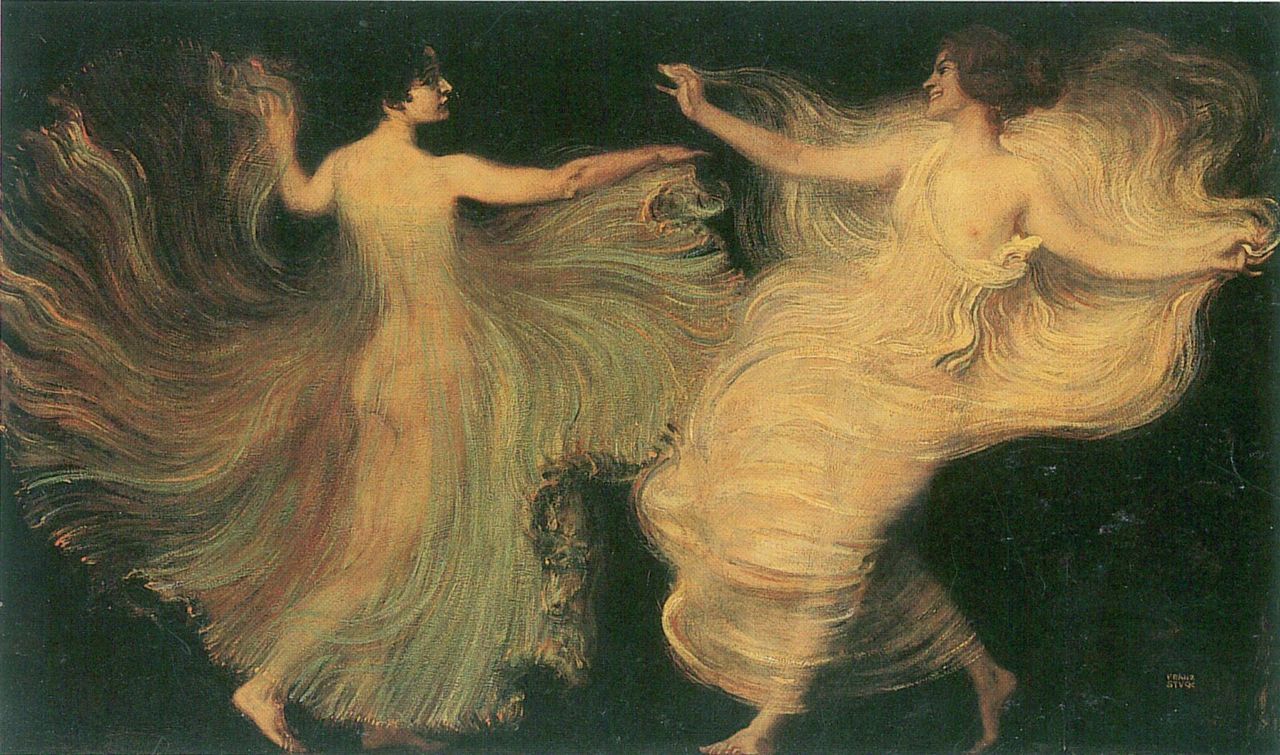Dancers can
be like jousters. Fear and excitement wring their hearts so into tangled skein.
Fluttered air brushes against their skins like chill. In anticipation of a
good, likely interminable, fight both cannot be more well-prepared, grimacing
to each other some distances afar as menacing demonstration of their
unconquerable audacities. Everything is all so punctiliously rehearsed and
choreographed. Even when darkness descends and everything is shrouded in utter
invisibility, each dancer will know by heart when to put which foot forward, to
which direction she will sway elegantly her supple bodice to duck narrowly from
her opponent, and when the time is ripe, she will let her skirt billow like an
arch of rainbow, the more fiery and colourful the rainbow the likelier the
chance the dancer is going to claim the final victory.
It is
always something with Art Nouveau that, when beholding a piece that epitomises
most substantially the essence of the said art movement, engenders within the
viewers a prickly sense of disquietude. Note that smile, that exhilarated smile
that unwittingly betrays hints of villainy, the smile that will most likely
dwell on the face of a femme fatale, when she tries tactfully to talk herself
out of a crime. Those paintings invariably present a world like an endless
nightmare, in which one happens upon a gaudy carnival, and whatever passes his
curious observation is dazzling, fiery, lurid, fun and neurotic.
Whilst
still grounded by the laws of Nature, Art Nouveau tends more towards the artificial
aspect of art- therefore out produces various forms of perverted nature, which
pristine ordinariness is now tainted by gilded adornments: a butterfly is
immortalised under a thick crust of blinding jewels. The same can be applicable
to the portrayals of human figures. They are all apparently enjoying their
lives to the fullest, so much so that one cannot help suspecting that they are
conscious of the prying painter, and thus endeavour to put on an affected
performance. Art Nouveau dislikes being vague about human sentiments.
But how
myriads secrets are hidden in that secretive smile? The smile that eclipses the
opponent and makes her feel diffident about. The ostensibly triumphant smile.
The smile that, in reality, masks the immense unease. The unease that deviates
not the rhythm of every dance. The rhythm of dance that accords to the
serpentine course of life. The life that is constantly bouts of fights with an
imaginary foe. The imaginary foe, the damnable of all.

Comments
Post a Comment